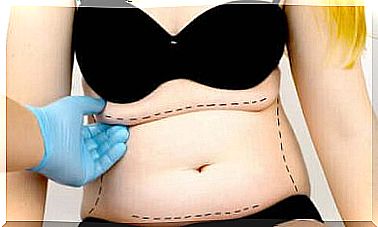What Are Endocrine Disruptors?

Scientific knowledge about endocrine disruptors has developed a lot in recent decades. Specific population studies show that a large part of the population is exposed to them. Experts have discovered their presence in human blood, urine and adipose tissue.
In recent decades, there has been an increase in the number of cases of some diseases and health problems, which has led experts to question the possible relationship to endocrine disruptors. Below we analyze this problem.
What are endocrine disruptors?
Endocrine disruptors belong to a broader group, which are endocrine active substances. These are compounds that can interfere with normal hormonal functions. Endocrine disruptors are when this interaction has negative effects.
The official definition is that of the World Health Organization. In a 2002 document, the WHO stated that an endocrine disruptor is an “exogenous substance or mixture that alters the functions of the endocrine system and consequently causes adverse health effects in an intact organism, or its offspring, or (sub) populations”.
How do they interfere with our endocrine system?
As we explained above, the main characteristic of endocrine disruptors is that they interfere with normal endocrine system function. They usually do it in three ways:
- In some cases , they mimic a natural hormone. Thus, they trigger the same reactions that would have been triggered if your body secreted the hormone.
- Other times, they can block the hormone receptors in cells that allow them to respond to the signals that the hormones send.
- Finally, they can interfere with normal hormone synthesis, transport, metabolism and secretion.
The endocrine system regulates many different bodily functions that can consequently be changed in the short or long term. Here are some of them:
- Muscle and skeletal development
- Brain development
- Temperature control (thermoregulation)
- Metabolism
- Reproductive functions

The negative effects of endocrine disruptors
The negative effects of endocrine disruptors affect not only humans but also other species, such as birds, reptiles, fish, molluscs or other mammals.
One of their added problems is that they sometimes do not have immediate effects. For example, substances that affect a fetus through the mother’s intake or exposure. The problems that continued exposure to a large number of these types of compounds cause are currently unknown.
Endocrine disruptors have been linked to some human health problems. Some of them are the following:
- Low sperm count in men
- Higher incidence of fetal injuries in both girls and boys
- Higher incidence of some types of hormone-sensitive cancers, such as breast or pancreatic cancer
- Metabolic disorders such as insulin resistance, diabetes or obesity
The most important endocrine disruptors
Many different substances can disrupt the hormonal system. Some are found in nature, while others are artificial. One of the main problems is that many groceries contain them.
Roughly speaking and without going into detail, endocrine disruptors can reach you through the following:
- Food
- Cosmetic products
- Cleaning or daily products
Endocrine disruptors are found in foods
We also find several subtypes among them. Meat, fish or milk can contain them if the animals have been treated with hormones. Although banned in many countries, it has become more difficult to regulate due to the globalization of consumption.
Others come from unintentional contamination that can occur during the production process. For example, dioxins, pesticides and other phytopharmaceutical products. They can also be found in product presentation and packaging, such as ink, glue, paper, plastic or cardboard. Some of them are the following:
- Bisphenol A
- Perfluoroalkyl and polyfluoroalkyl substances (PFAS)
- Phthalates
Contact through cosmetic products

Some cosmetic and personal hygiene products contain compounds with hormonal activity. We could categorize some of the known substances into three major groups:
- Parabens
- Triclosan
- Benzophenone
Possible endocrine disruptors in cleaning products and common consumables
In addition to cleaning products, we are talking about common items such as televisions, telephones and computer screens, sofa upholstery, furniture, etc. In fact, house dust can contain a large amount of these substances.
Reduce the effect of endocrine disruptors
As we have explained in this article, we come in contact with many substances that can be found daily in our homes. Although it is impossible to reduce their presence completely, you can try to minimize this risk with a few simple measures:
- First, choose organic foods whenever possible.
- Second, avoid plastic containers, especially those containing bisphenol A, styrene and phthalates.
- Similarly, choose materials such as glass, ceramic or wood to store food, as well as kitchen utensils.
- In addition, you should focus on natural, paraben-free cosmetics that do not contain synthetic fragrances. This applies to shampoos and shower gels, as well as deodorants, make-up or sunscreen. Keep an eye on the ‘COSMOS NATURAL’ certification.
- Finally, choose cleaning products and clothes with ECOCERT Seal of Approval.
Endocrine disruptors are harmful to health
As we have mentioned several times in this article, endocrine disruptors are harmful to health. They are always in the environment, as they are found in food and containers, in drinking water, in cosmetic products and in many groceries.
It is important to take small daily measures to minimize use and exposure to them. Nevertheless, public guidelines and regulations are also important.









